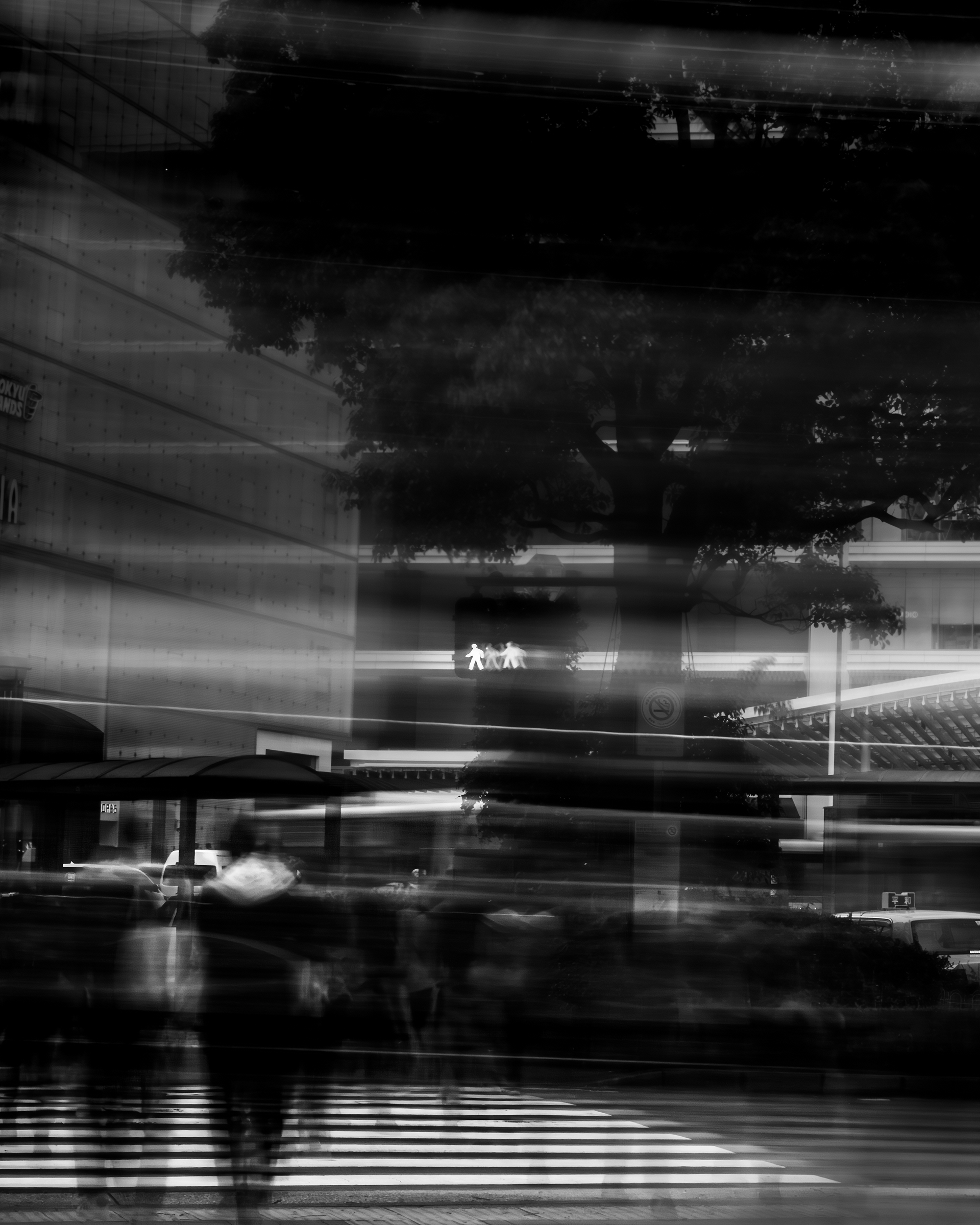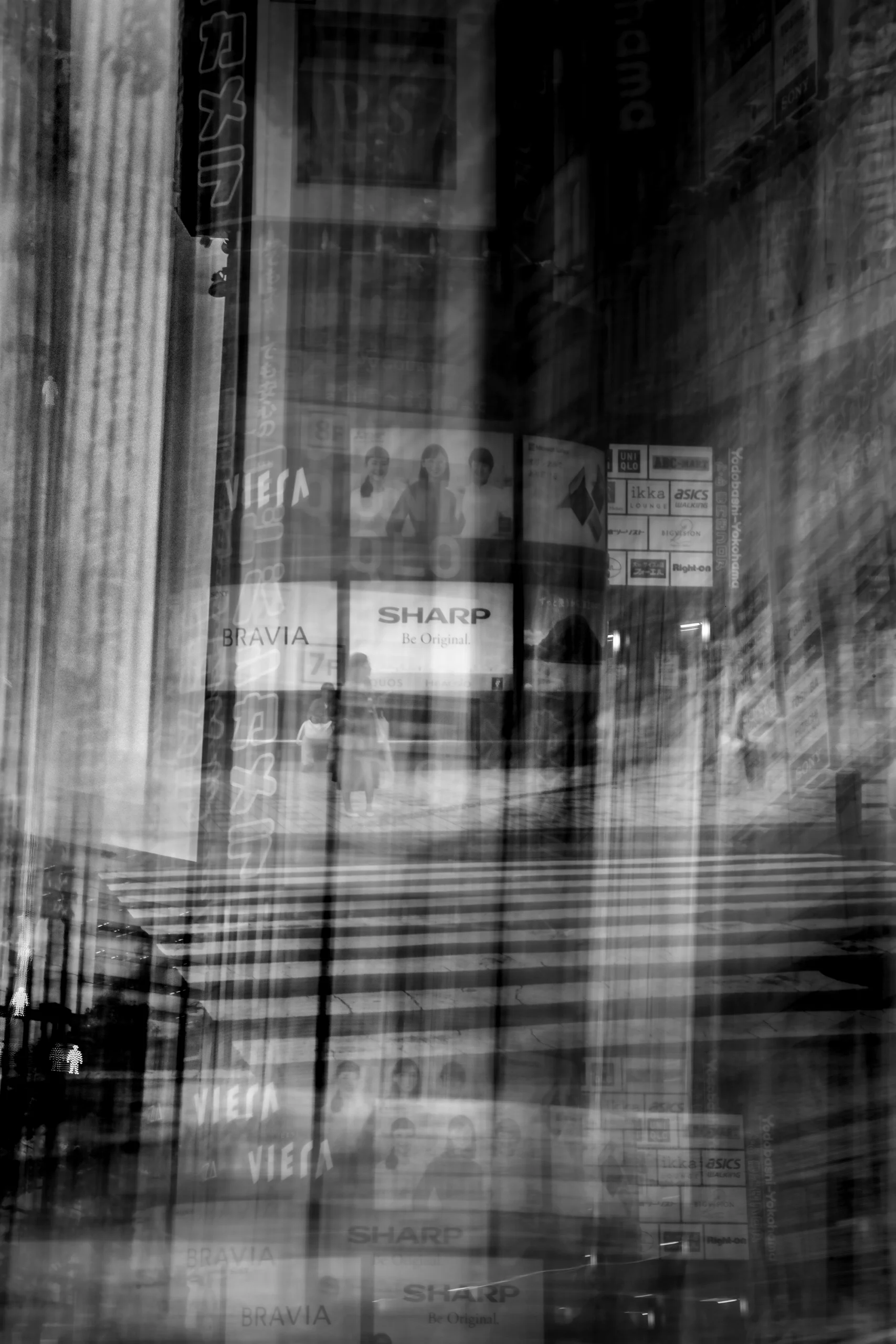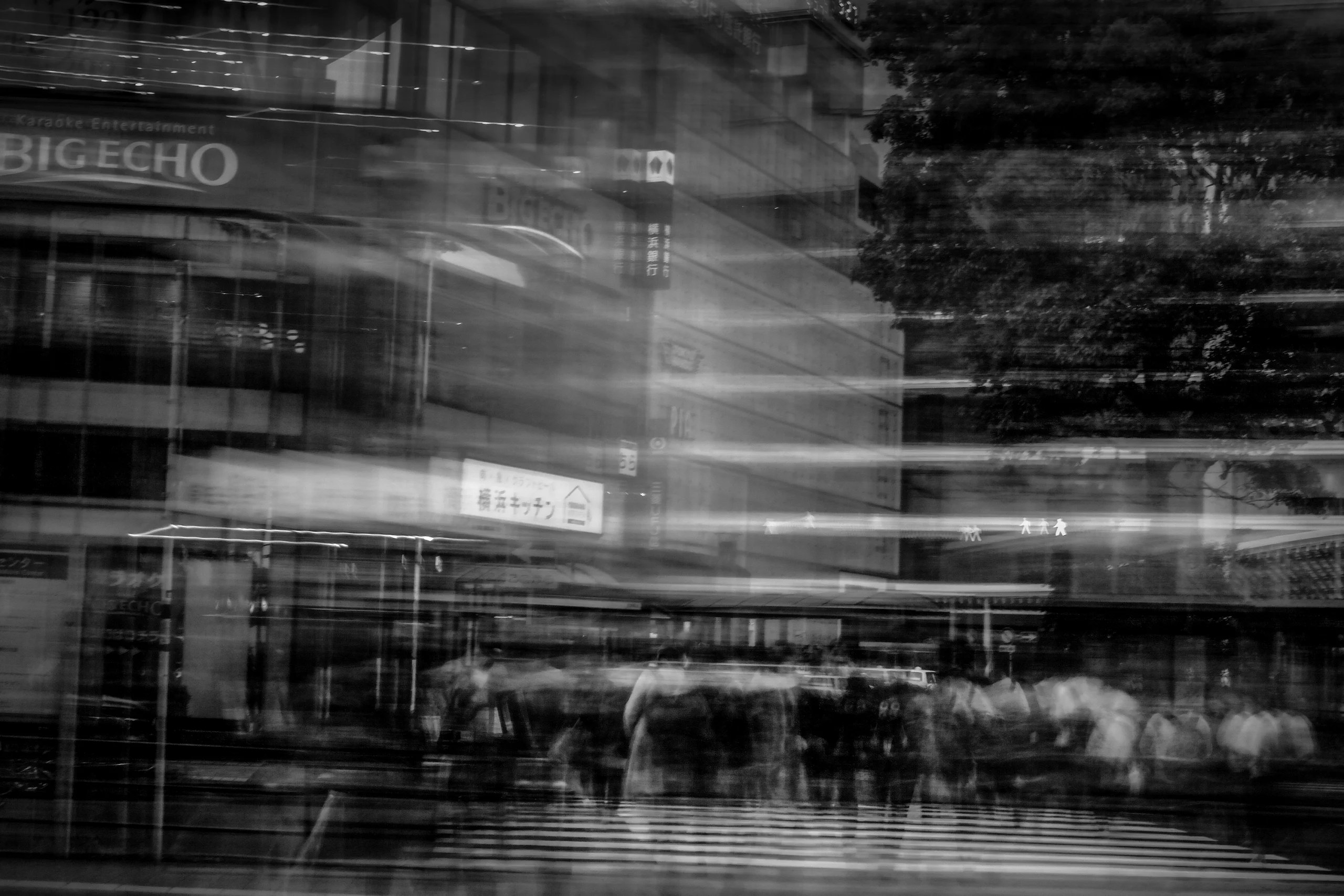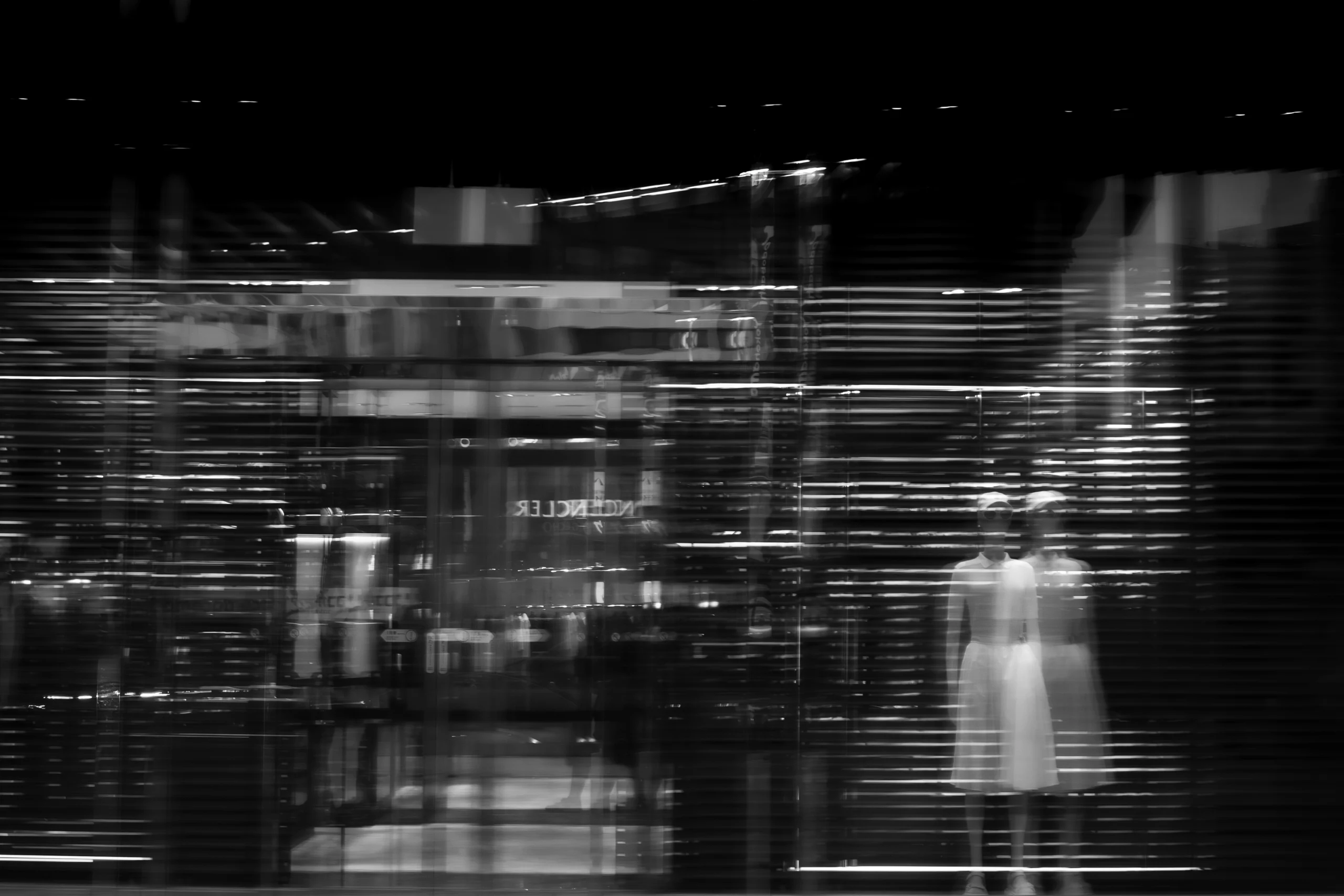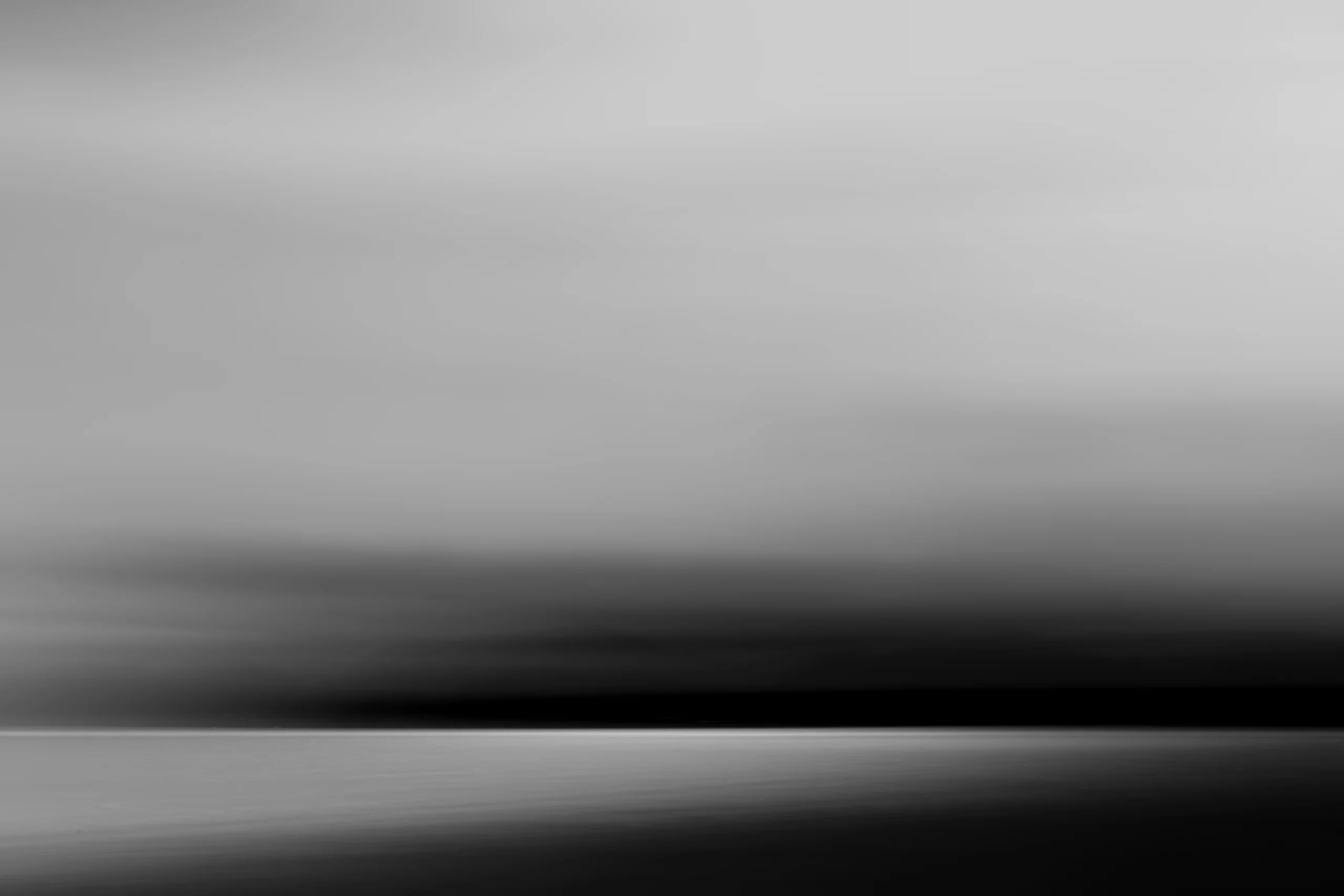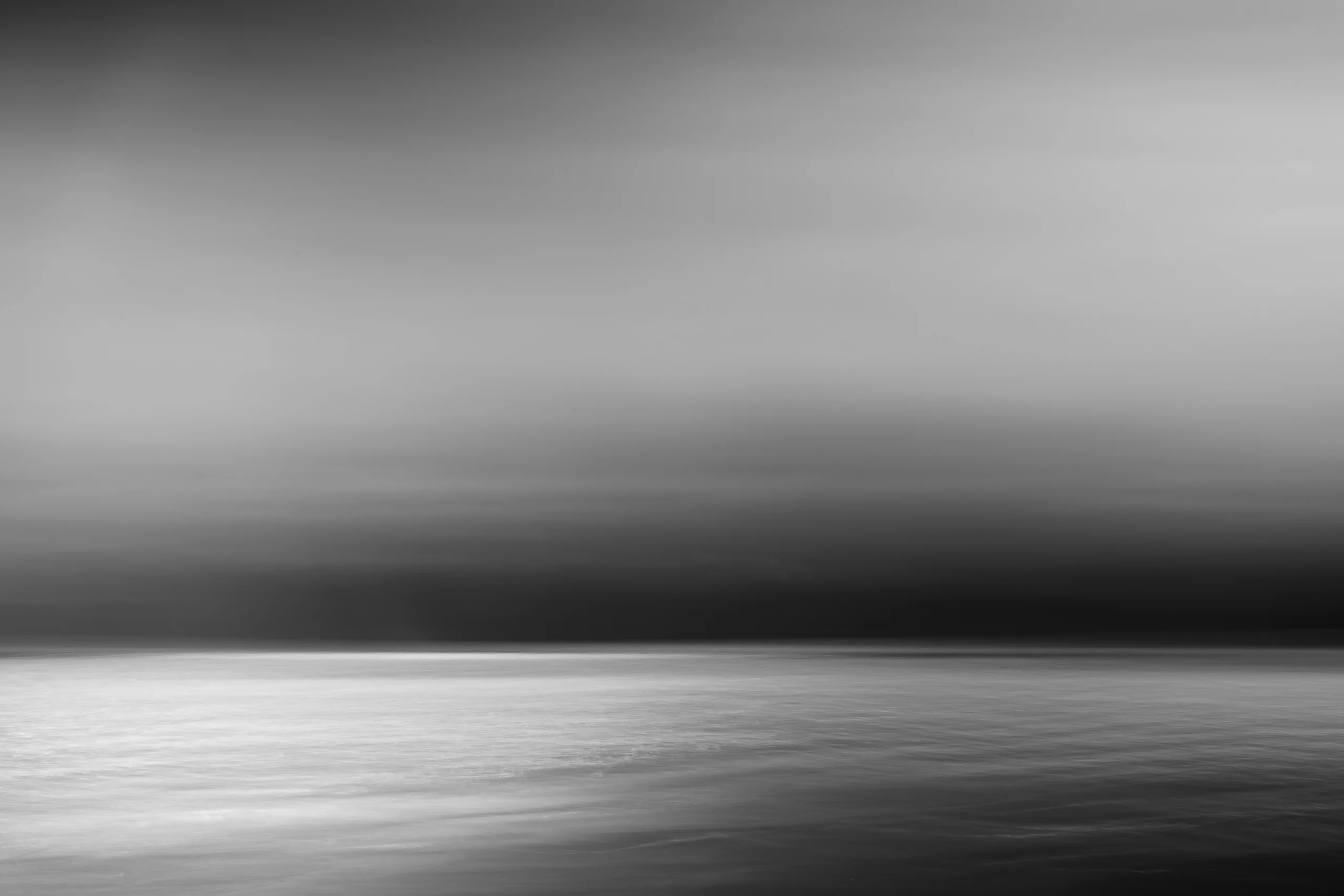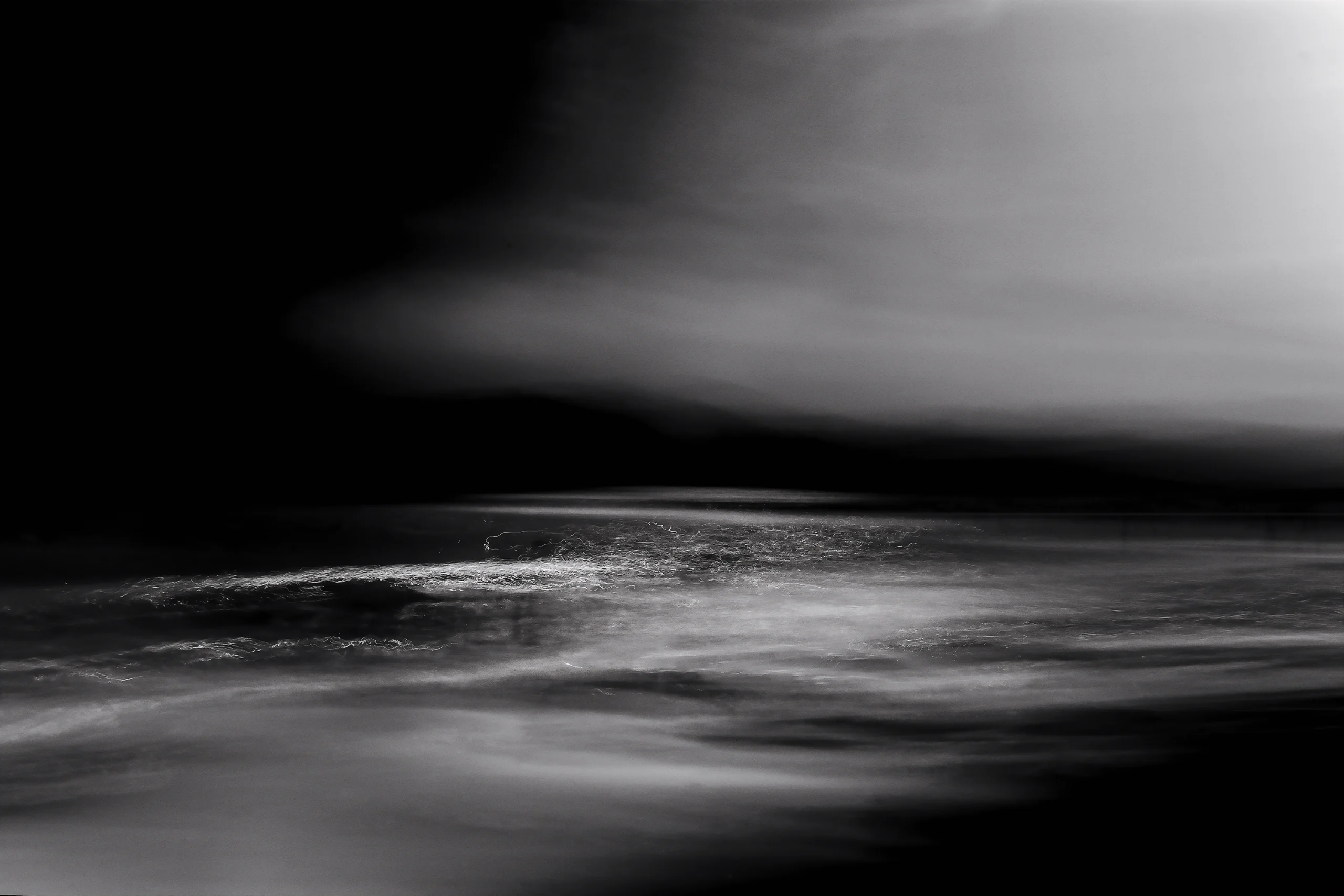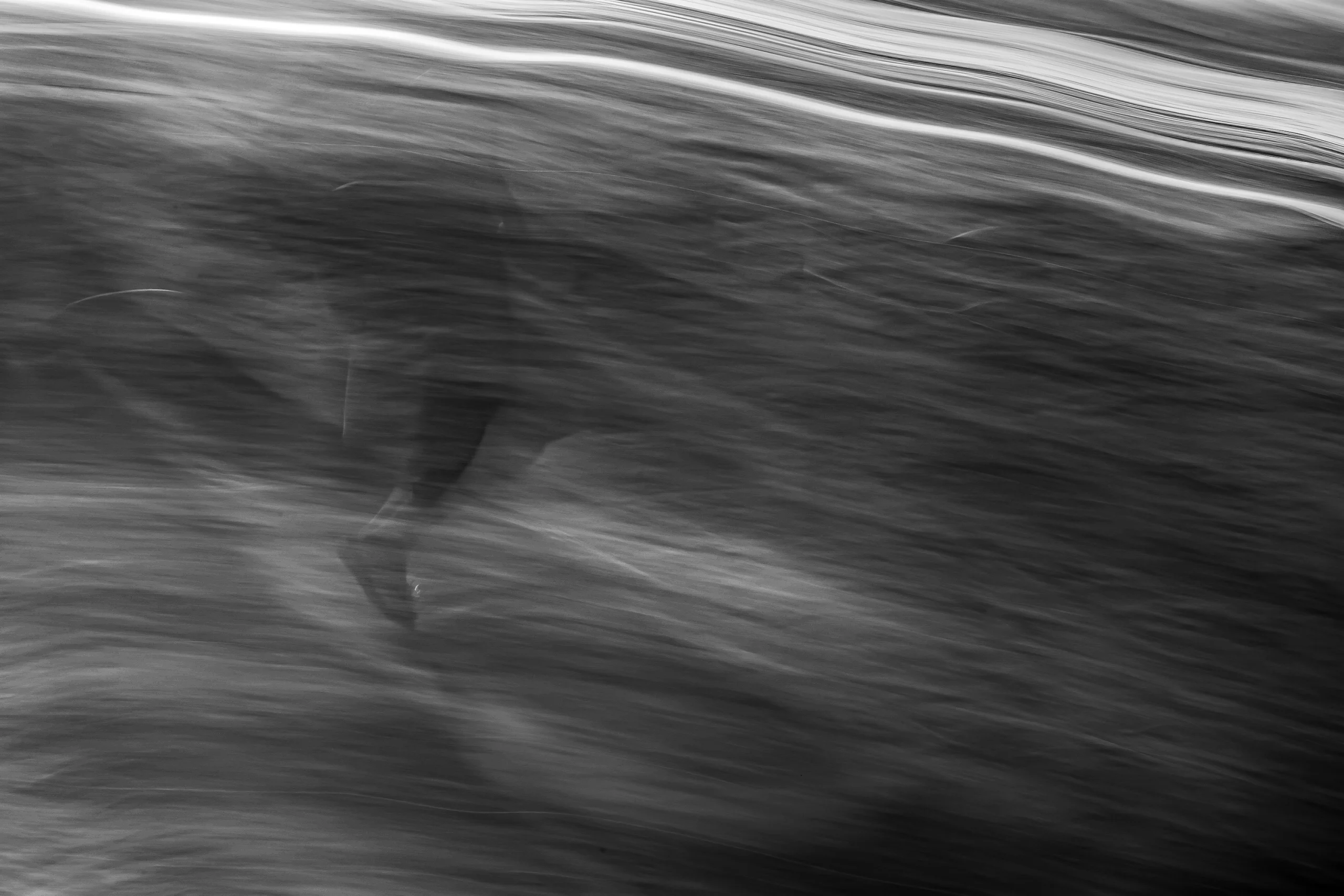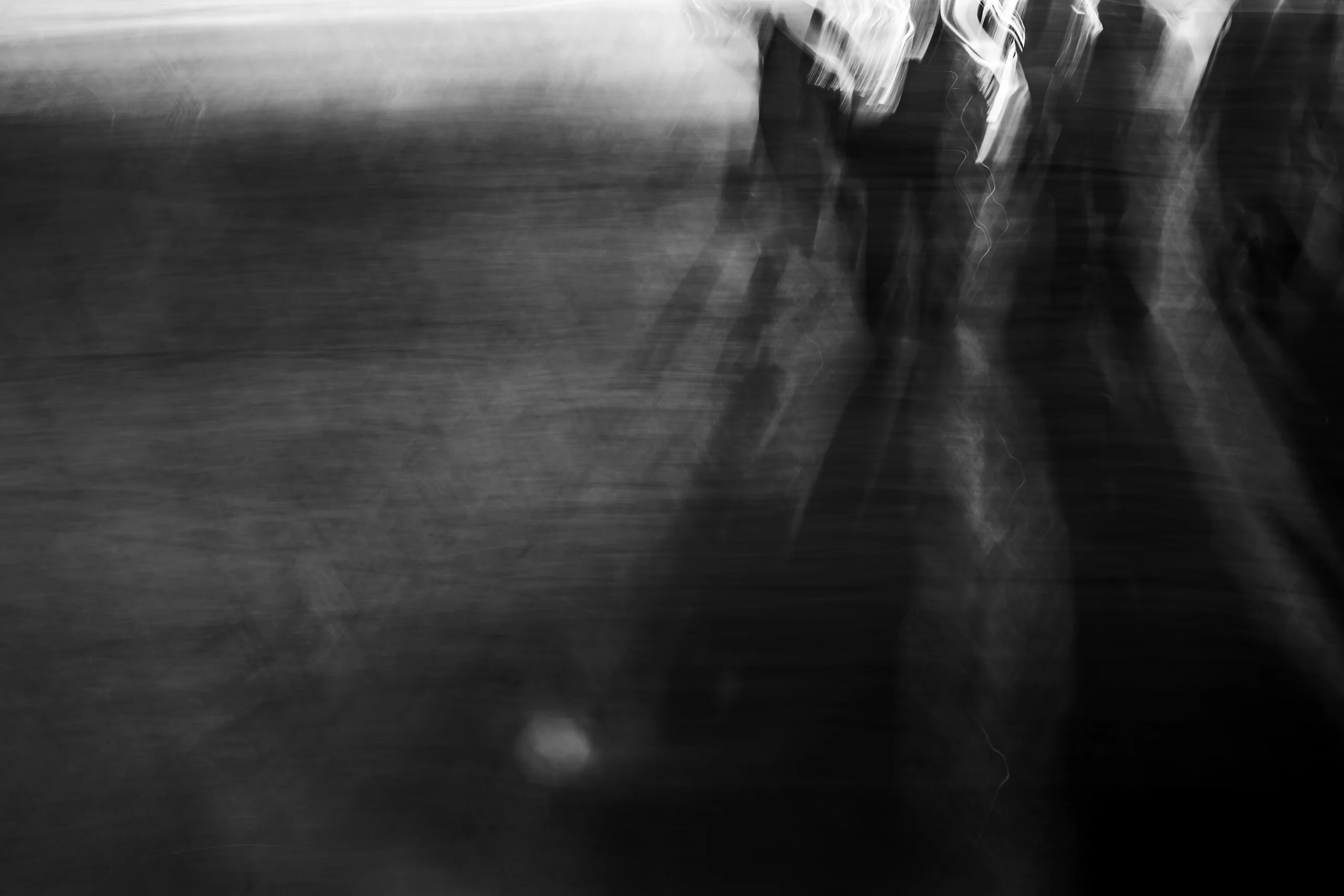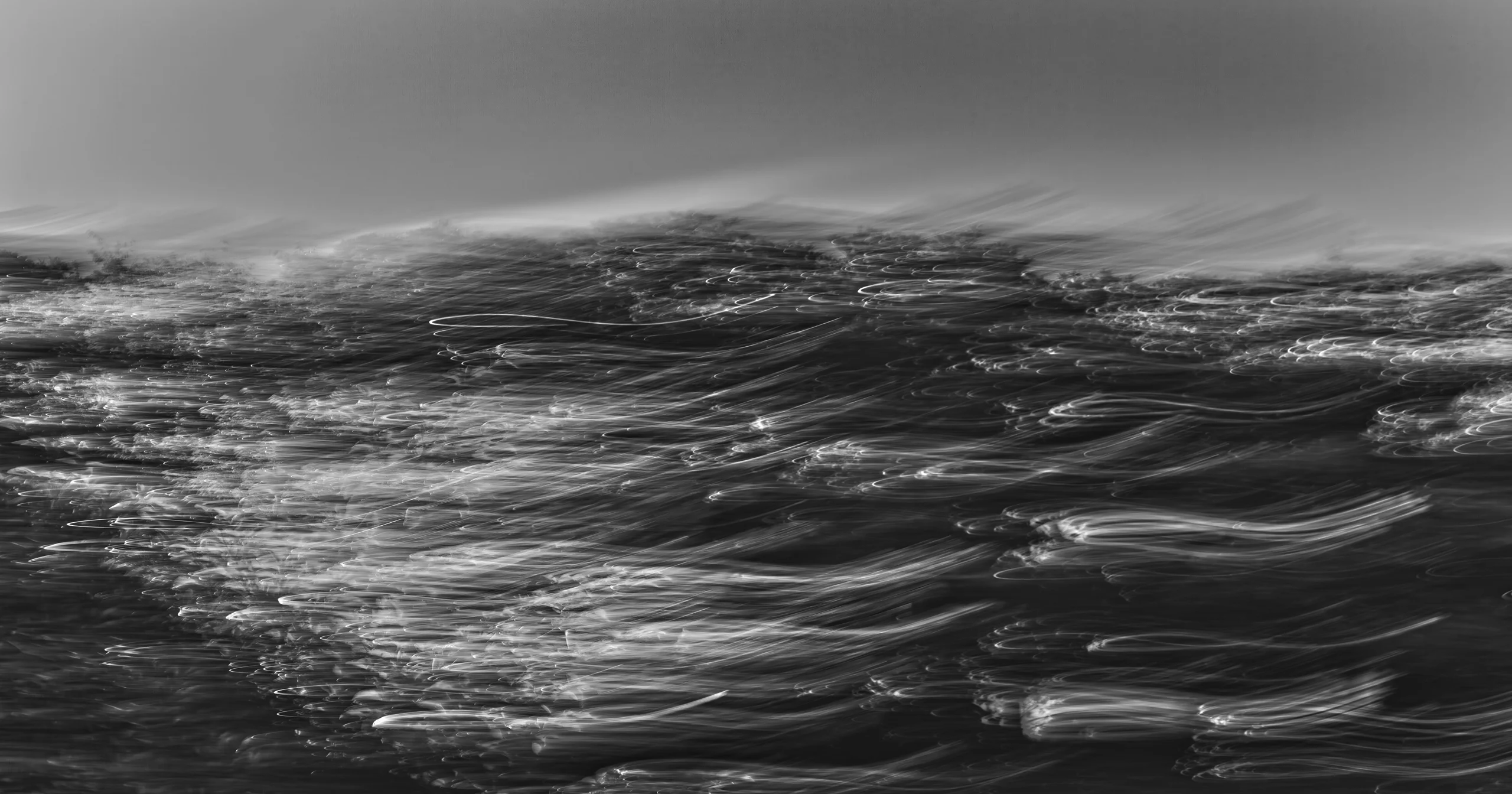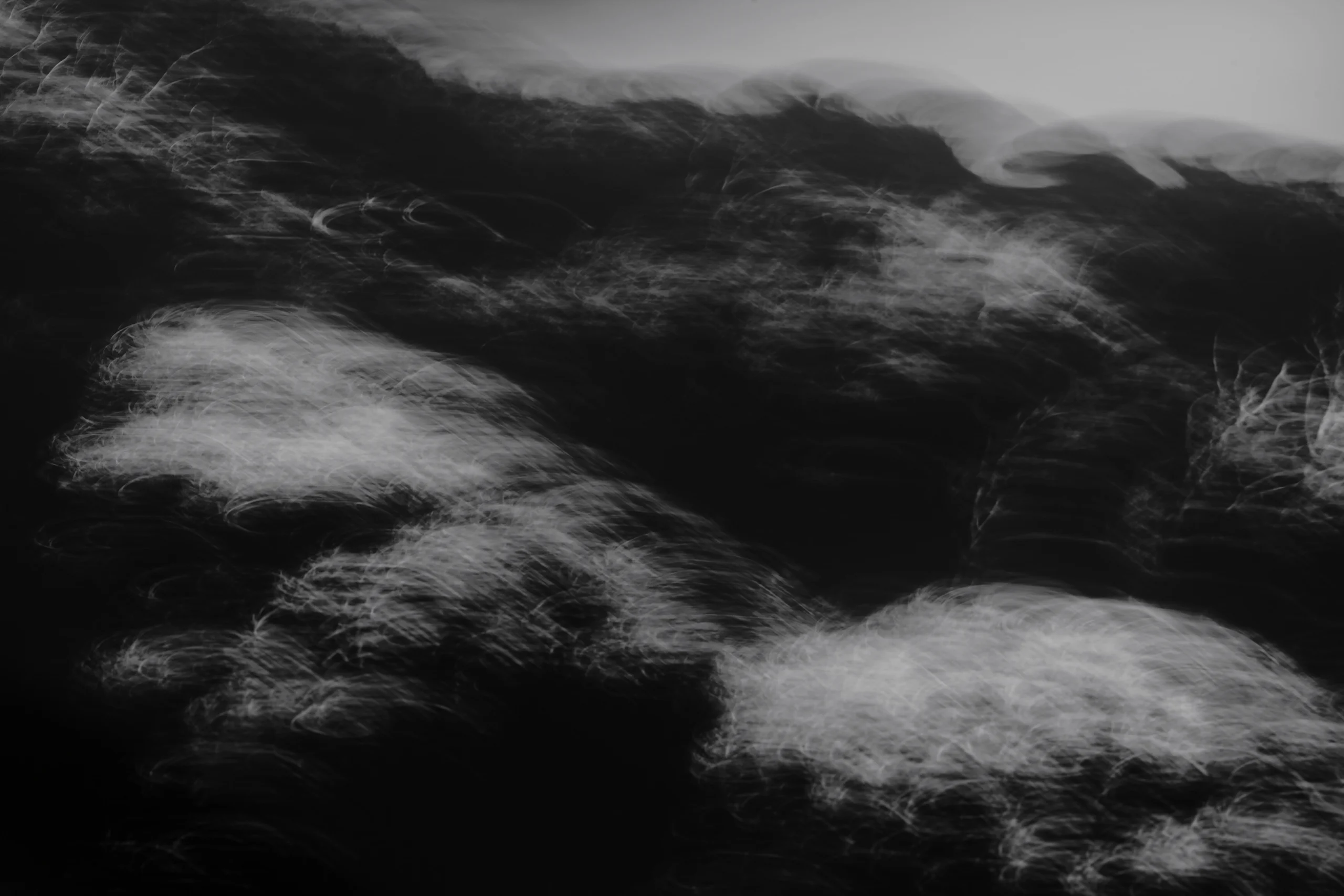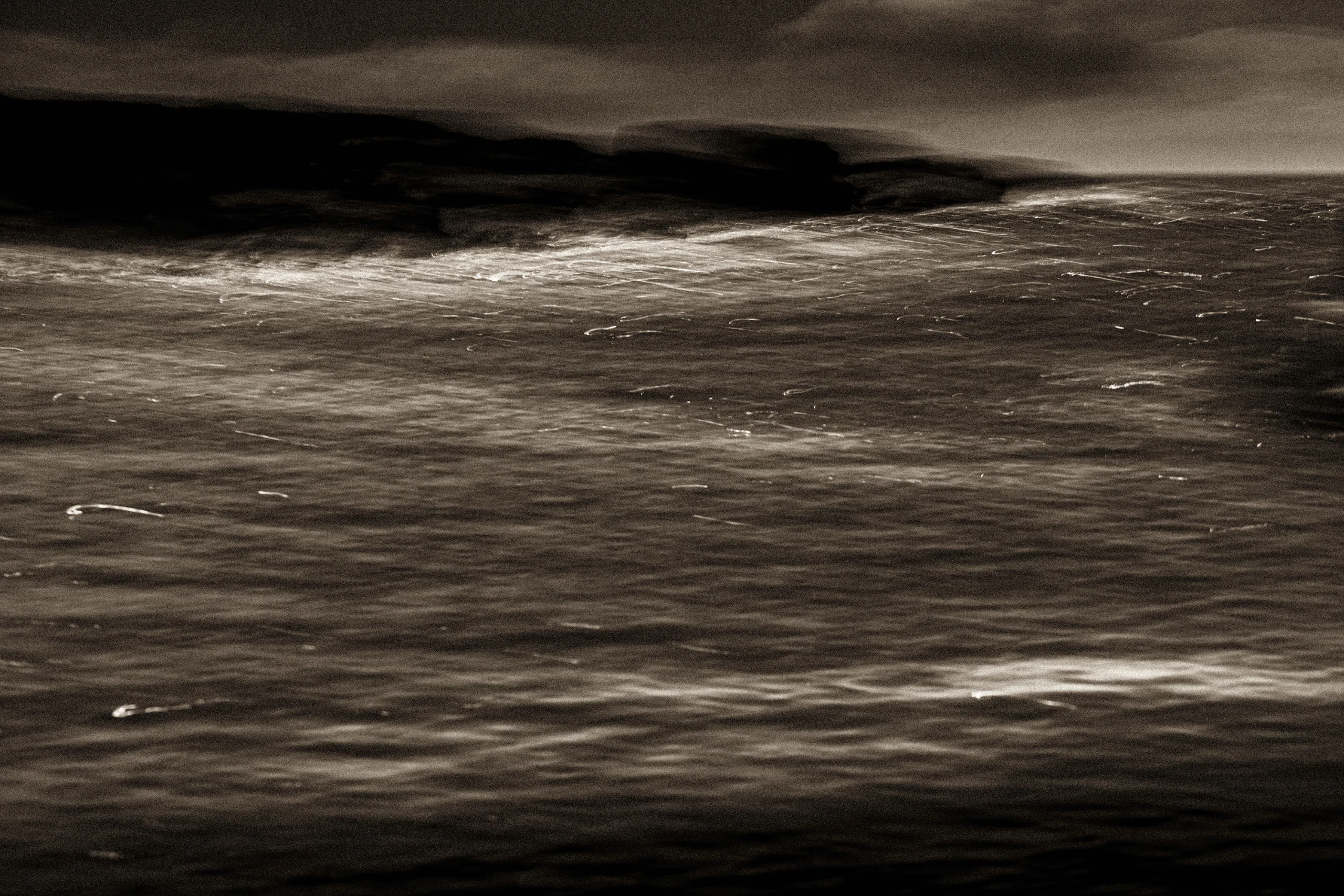About ICM
English
Introduction
Anyway, move the camera!
City and ICM
Around 3:00 p.m. after the rain, I set up my tripod out of the way of pedestrians, attached a variable ND 2-32 to adjust the light level, and released the shutter using the stopwatch on my iPhone as a guide. I wanted to capture the dynamic mass of the group crossing the crosswalk.
ICM on the beach
After we finished taking photos in front of Yokohama Station, we often thought about the situation. There was too much information and noise, so the theme became unclear. What were they trying to express? It’s too boring.
If it’s in black and white, I’d like to aim for a more poetic expression. I tried to simplify the picture by removing excess elements and adding the right amount of composition.
After about a month, I went to the beach at sunset to avoid crowds.
I used a single exposure and moved the camera to capture the sea, sky, and beach.
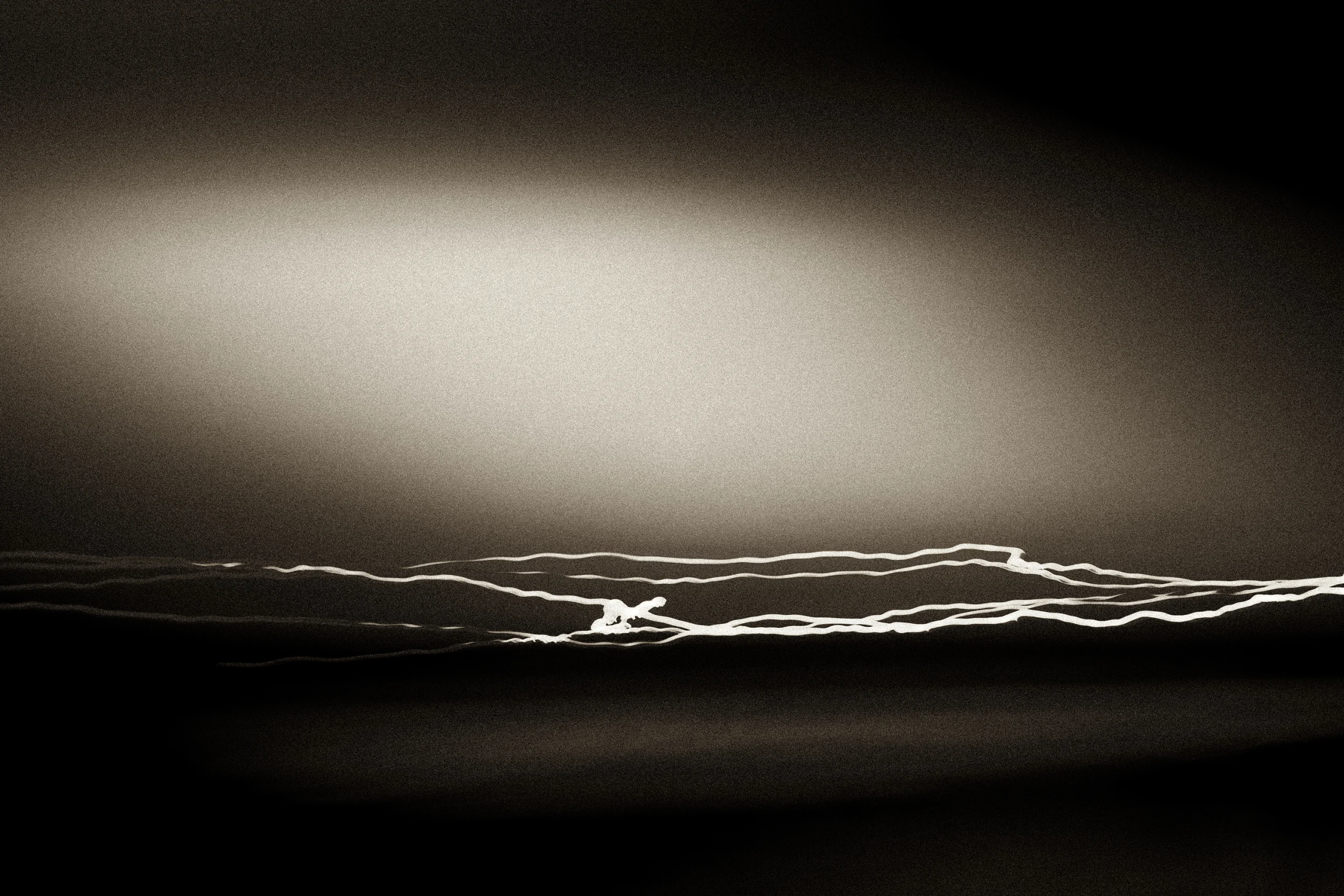
Cover a part of the lens with a finger or small black plate during exposure. Then, adjust the position and amount of incoming light while panning.
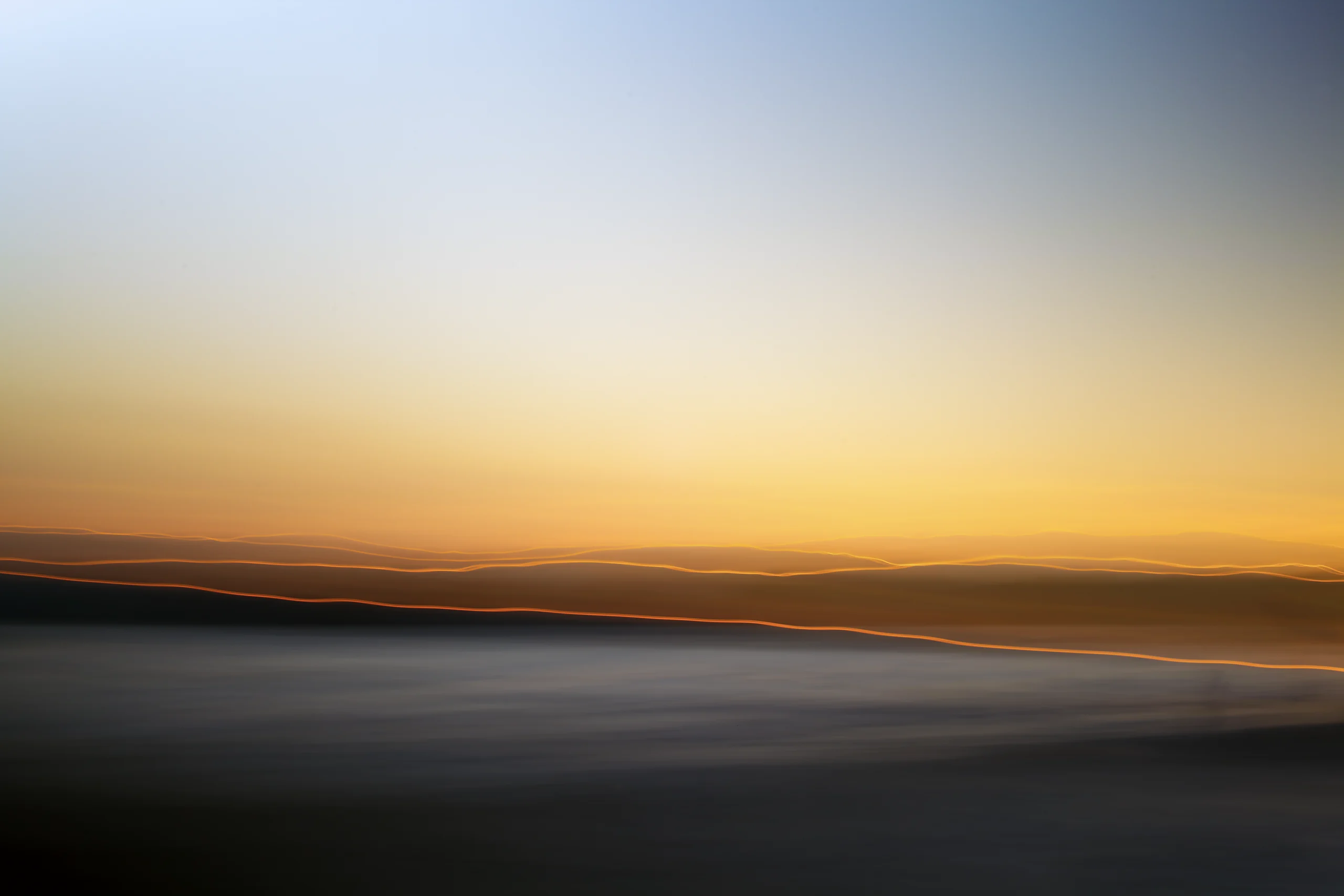
A moment before sunset, when the light illuminated the ridgeline, I captured its essence with minimal panning.
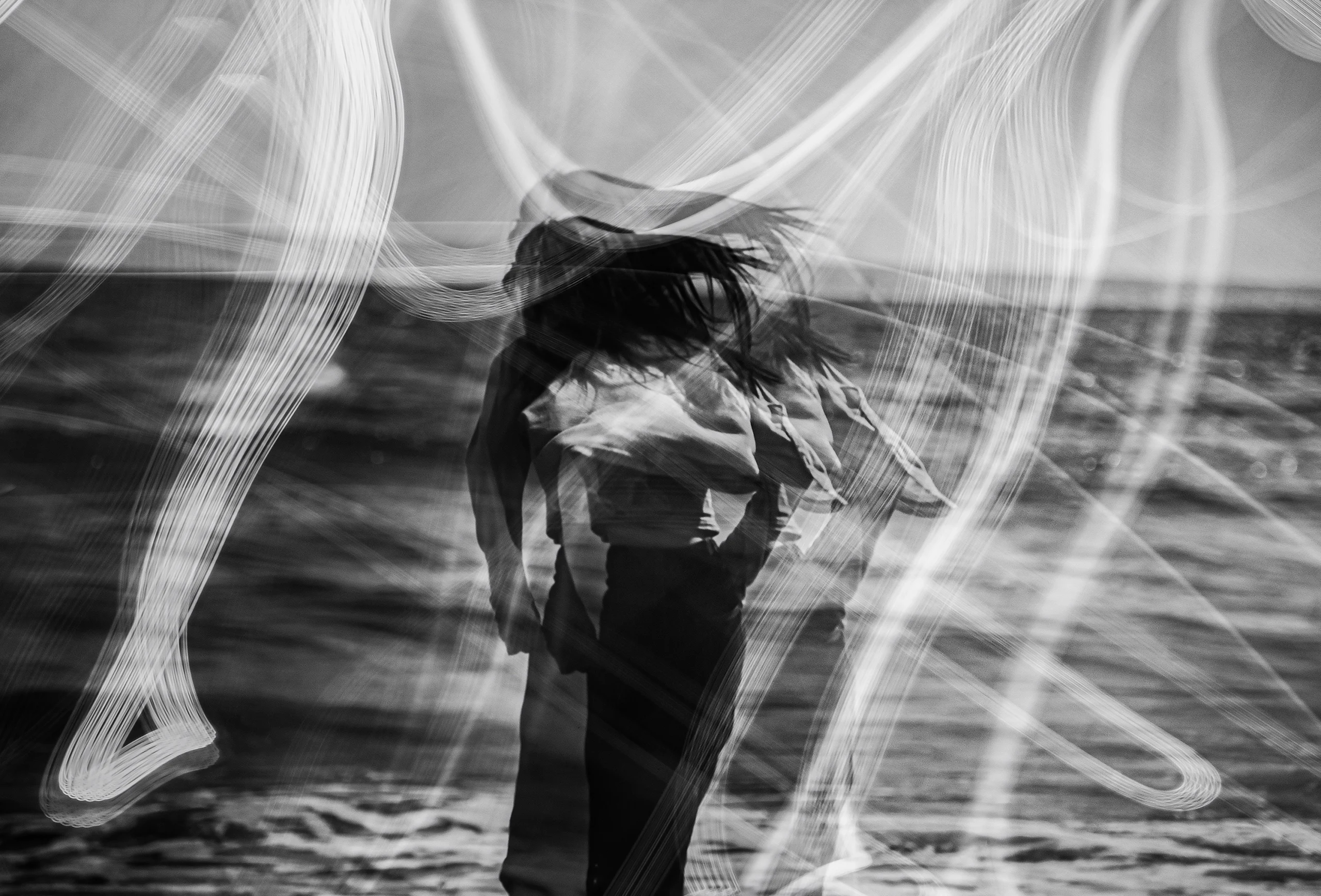
I use a combination of ICM and multiple exposures.
First, I pan-and-tilt the model’s back three times, using my palm as a shutter release.
Then I turned the lens to the feet and captured the light reflecting off the tide pools in a quick licking motion.
The bulb time was about 20 seconds.
Peninsular
I love the word “peninsula.” The borders between land
and sea don’t change, but I prefer the cliffs at the end of them.
The rocky shore, carved by the waves, is under my feet. The rocky shore, carved by the waves, is under my feet. The wind’s roar covers me entirely. The rocky shore, carved by the waves, is under my feet. Sometimes, when it’s rough outside, the waves’ foam pours over my face.
With only one step forward, your body can swim through the ages, and your life will be over.
The photo was taken at Jōgashima Island in Kanagawa Prefecture. I’ve been to this place many times since I was
12 years old.
Every time, I come back to look at the horizon, feel the wind, listen to the waves, and think about myself.
People’s thoughts can change the way coastlines look. But here, on the cliff’s sturdy reefs at the end of the peninsula, we’re powerless.
Life is temporary, changeable, and fleeting. However, the strong and exposed natural environment remains unchanged.
Standing in such a location reminds me of my position in the world.
日本語
はじめに
ICM(Intentional Camera Movement)は斬新な手法に見えるかもしれない。特に2019年頃から多くのカメラマンたちがICMにチャレンジしている。YouTubeやインスタグラムには彼らの実践記録や作品がアップされている。しかしこの手法は決して斬新なものではない。
1937年カナダ生れ、自然写真家・ライターのフリーマンパターソンは彼の著書”Photography and the Art of Seeing”(1985/07)で「カメラを動かしながらシャッターを切る」(ジャンプしながら樹木を撮影する)技法に触れ、実践を繰り返していた。つまりこの技法はすでに古典的技法と言っても良いだろう。
写真撮影は本来、カメラを固定し、焦点を求め、シャッターを切る。これが決まりだった。しかしFreemanはその常識を覆したわけだ。
カメラを素早く動かし、光の残像を捉える。
私は「写真と視覚の芸術」に触発され、早速チャレンジを始めた。
私は樹木ではなく、街の雑踏を光の軌跡として捉えたいと考えた。
例えば目の前を横切った人の姿は、カメラを動かすことによって微かな残像として感光する。それは人間の脳に記憶された不確かな残像のようだし、なぜか懐かしい。
ICMは魅力的で、新鮮で、刺激的です。しかし、それは私が思っていたよりもずっと難しいものでした。
あれから40年、改めてその面白さを再発見し、自分にとってのICM表現に挑戦しています。急ぐことなく、ゆっくりゆっくりと。
“Photography and the Art of Seeing” は2011年10月再販されました。
WIKIPEDIA Freeman Patterson
とにかくカメラを動かす!
本題に入る前に(前置きが長い!長い!)ICM撮影でのカメラの動かし方について確認しておこう。
くどいようだがICMとはIntentional Camera Movement、つまり「意図的にカメラを動かして撮影する」手法です。
シャッタースピードを遅くして、カメラを水平に動かしたり、垂直に動かしたり、回転させたりして、「モーションブラー」を作り出すわけです。
ブレが表現の主役になり、現実とは異なる抽象的な写真になります。
一概にカメラを動かす、と言っても動かす方向、速度、量によって得られる効果は大きく異なります。例えば次のようなものがあります。
- パニング:カメラを水平に動かして、動いている被写体に合わせることで、被写体をシャープに、背景をぼかす効果。
- ローテーション:カメラを回転させて、円形にぼかしを作る効果です。中心にある被写体が強調されます。
- バーティカル:カメラを垂直に動かして、上下にぼかしを作る効果です。高い建物や木などに向いています。
- ズームバースト:カメラのズーム機能を使って、撮影中に焦点距離を変えることで、中心から外側に向かってぼかしを作る効果です。被写体に向かって動いているような印象を与えます。
街とICM
2022年5月、横浜駅前の横断歩道脇でICM撮影に挑んだ。数十年ぶりのICM再挑戦です。
カメラ本体は2005年10月に発売されたEOS 5Dの後継機種ののCanon EOS 5D mark II (2008年11月リリース)。
私はこの5D Mark II の使い勝手が良く、20年以上続いたNikonから乗り換えていた。2110万画素、35mmフルサイズCMOSセンサーは当時としては画期的な能力を持っていた。ISO感度の常用設定値は100〜6400、拡張設定によりISO50、12800、25600。解像度が優れ、繊細な階調を得ることができました。
この日選んだレンズはZeiss PlanarT*1.4/50mm ZE。これも長年愛用してきた。イメージを的確に表現できる信頼のレンズです。
雨あがりの午後3時頃、歩行者の邪魔にならない位置に三脚を据え、光量調節のため可変ND 2〜32を装着。iPhoneのストップウォッチを目安にレリーズでシャッターを切る。ICMだけでなく長時間露光あるいは多重露光を併用して横断歩道を渡る群像のダイナミックな塊を捉えようと考えました。
海岸でのICM
横浜駅前での撮影を終え、反省点が頻出した。見ての通り情報が多過ぎてうるさい。テーマが曖昧になり、何を表現したいのか。あまりにも散文的だ。
モノクロームで表現する以上、私的には詩的な表現を目指したい。余計な要素を削ぎ落とし、ギリギリの構成要素で画面を完成したいと考えた。
約1ヶ月後、海に向かった。人気の少ない日没前の時間帯を狙った。
多重露光を避けて、単純にカメラを動かす。海と空と砂浜、この三要素を主にパンニングで撮影した。

ICMと多重露光を併用しています。
まずモデルの後ろ姿を掌を3回、シャッターがわりにしながらパンアンドチルド。
続いてレンズを足元に向け、潮溜りに反射する光を素早い動きで舐めるように捉えました。
バルブ時間は20秒ほどです。
半島
“ペニンシュラ”、この言葉の響きが好きだ。
陸地と海の境目、それは海岸や砂浜も同様だが、私は半島の先端部、荒々しい断崖絶壁が好きだ。
足元には波に侵食された深い岩場が迫り、風の咆哮に全身が包まれる。天候の荒れた時、岩場に砕ける波頭の泡沫が顔面にまで降り注いでくる。
一歩踏み出せば、肉体は時空を泳ぎ、命は尽きるだろう。
撮影場所は神奈川県の城ヶ島。この地点に私は何度も佇んできた。
一番古い記憶は12歳の頃。
以来、繰り返しこの地点にやって来ては水平線を眺め、風を感じ、波を聴きながら自己について考えてきた。
砂浜や海岸線は人々の思惑で姿を変えることがある。しかし半島の先端部、断崖絶壁の強固な岩礁には人間の力など無力だ。
移ろい変化しやすく儚い人間の存在。だが荒々しい剥き出しの自然は微動だにしない。
このような場所に佇むとき、私は改めて自分の居場所を自覚することができる。
